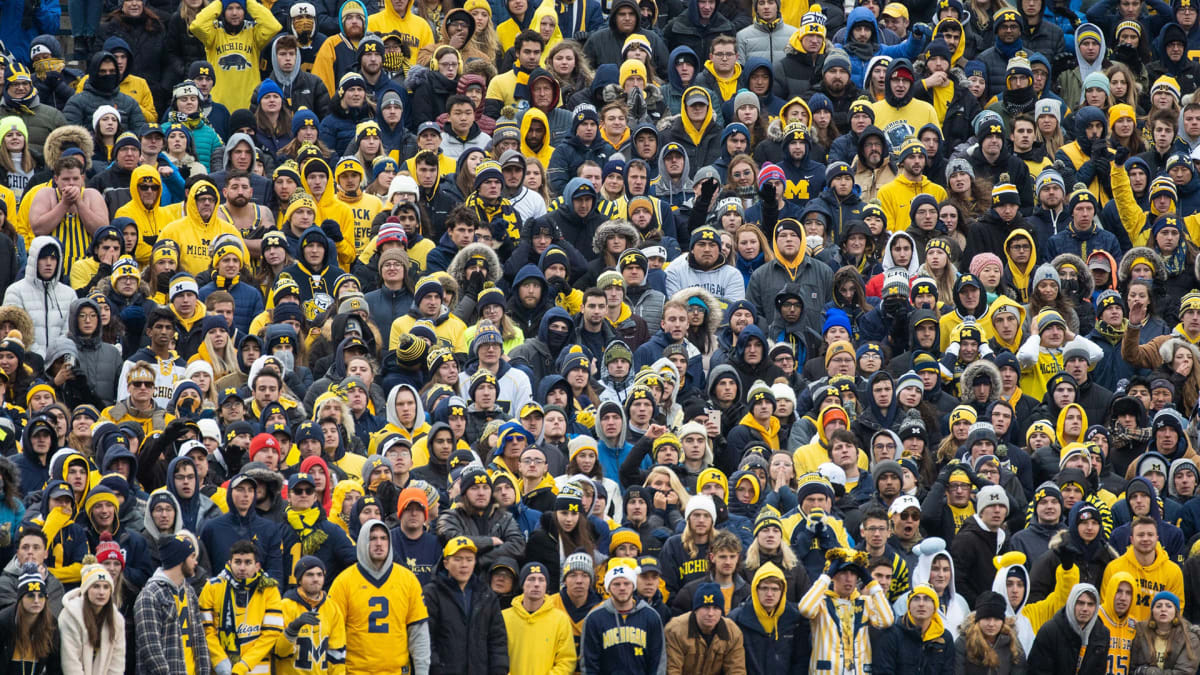Economic Fallout In College Towns: The Consequences Of Decreasing Enrollment

Table of Contents
Reduced Revenue for Local Businesses
The immediate and most visible impact of decreasing enrollment is felt by local businesses. A smaller student population translates directly into lower demand for goods and services, creating a ripple effect throughout the local economy.
Impact on Restaurants and Retail
- Decreased student population: This directly leads to lower demand for everyday goods and services. The familiar lunchtime rush at local restaurants diminishes, and evening crowds dwindle.
- Reduced sales: Retailers specializing in student supplies, such as textbooks, apparel, and electronics, experience a significant drop in sales. This is compounded by the decrease in demand for everyday items purchased by students.
- Increased vacancy rates: As businesses struggle with reduced revenue, some are forced to close, leading to an increase in commercial property vacancies and impacting property owners. This creates a negative feedback loop, further depressing the local economy.
Impact on Housing Market
The decline in student numbers significantly impacts the housing market.
- Lower rental demand: Landlords experience decreased rental income due to fewer students seeking accommodation. This is particularly true for student housing, which may see significant vacancy rates.
- Decreased property values: Reduced demand for both rental and owner-occupied properties can lead to a decline in property values, impacting homeowners and the overall tax base of the community.
- Increased competition: With more properties available and fewer renters, landlords face increased competition, potentially leading to lower rental rates and decreased profitability. This can also lead to deferred maintenance in rental properties as owners struggle to maintain profitability.
Job Losses and Increased Unemployment
Decreasing enrollment inevitably leads to job losses, both directly within the education sector and indirectly throughout the local economy.
Direct Job Losses in the Education Sector
Universities facing budget constraints due to fewer students are forced to make difficult decisions.
- Faculty and staff reductions: Budget cuts often necessitate reductions in faculty and staff positions, leading to job losses for professors, instructors, administrative personnel, and support staff.
- Fewer administrative positions: Departments may consolidate or eliminate positions to streamline operations and reduce costs.
- Loss of adjunct faculty positions: Adjunct professors, often the most vulnerable to budget cuts, are frequently the first to lose their positions. This disproportionately affects the local economy because adjuncts often live and work in the surrounding community.
Indirect Job Losses in the Local Economy
The impact extends beyond the university campus. Businesses reliant on student spending experience a knock-on effect.
- Layoffs in businesses: Restaurants, shops, and other businesses dependent on student patronage are forced to lay off employees to cut costs in response to decreased sales.
- Reduced employee hours: Existing employees may experience reduced working hours or a decrease in wages as businesses struggle to maintain profitability.
- Increased competition for remaining jobs: The shrinking job market leads to increased competition among job seekers, driving down wages and potentially increasing the unemployment rate. This creates a difficult situation for residents of the college town.
Strain on Local Government Budgets
The economic downturn caused by decreasing enrollment puts a significant strain on local government budgets.
Reduced Tax Revenue
Lower student numbers translate into reduced revenue streams for local governments.
- Lower property tax revenue: Vacant or less valuable properties generate less property tax revenue, negatively impacting local budgets.
- Decreased sales tax revenue: Reduced consumer spending leads to a decline in sales tax revenue, further impacting government funding.
- Reduced income tax revenue: Job losses result in lower income tax revenue, limiting the government's ability to fund essential services.
Impact on Public Services
Limited government funding inevitably leads to cuts in public services.
- Cuts to essential services: Funding reductions may force cuts in essential services, such as public transportation, libraries, parks, and recreational facilities, impacting the quality of life for residents.
- Difficulty maintaining infrastructure: Maintaining and improving infrastructure becomes more challenging with decreased funding, potentially leading to deferred maintenance and deterioration of public assets.
- Reduced funding for education programs: Funding for local schools and other educational programs may be reduced, creating a negative impact on community development and future economic growth.
Long-Term Implications for Community Development
The consequences of decreasing enrollment extend far beyond the immediate economic impact, threatening the long-term sustainability and development of college towns.
Brain Drain
Fewer students attending and graduating means a decreased potential for future community growth.
- Fewer graduates staying: Graduates may seek opportunities elsewhere, leading to a "brain drain" and a loss of young talent and innovation, which negatively impacts future community growth.
- Loss of young talent and innovation: The absence of young, educated individuals hinders economic diversification and innovation, slowing down long-term economic growth and development.
Economic Stagnation
The overall economic health of the community is threatened by declining enrollment trends.
- Reduced investment: The lack of economic vibrancy makes college towns less attractive for new businesses and investors, leading to reduced investment and slower growth.
- Slower economic growth: Compared to other areas with thriving economies, college towns facing decreasing enrollment tend to experience slower economic growth and development.
- Difficulty attracting new businesses and residents: The overall economic weakness discourages new businesses and residents from relocating to the community, further exacerbating the problem.
Conclusion
The economic fallout from decreasing enrollment in college towns is a serious issue with far-reaching implications. Reduced revenue for businesses, job losses, strained government budgets, and long-term stagnation are just some of the consequences. Addressing this challenge requires proactive measures from universities, local governments, and businesses to attract and retain students. Understanding the impact of decreasing enrollment is crucial for developing effective strategies to revitalize these communities and ensure their continued prosperity. Let's work together to find solutions to mitigate the effects of decreasing enrollment and secure a vibrant future for our college towns. We must proactively address declining student numbers and the resulting economic consequences to ensure the long-term health of these communities.

Featured Posts
-
 Is A Truly Enduring Logitech Mouse Possible
May 21, 2025
Is A Truly Enduring Logitech Mouse Possible
May 21, 2025 -
 Cassis Blackcurrant A Comprehensive Guide To This Exquisite Berry
May 21, 2025
Cassis Blackcurrant A Comprehensive Guide To This Exquisite Berry
May 21, 2025 -
 Mainz Falls To Dortmund Beier Scores Twice
May 21, 2025
Mainz Falls To Dortmund Beier Scores Twice
May 21, 2025 -
 Risicos Voor De Voedingsindustrie Abn Amro Over Afhankelijkheid Van Arbeidsmigranten
May 21, 2025
Risicos Voor De Voedingsindustrie Abn Amro Over Afhankelijkheid Van Arbeidsmigranten
May 21, 2025 -
 Wrigley Fields Charming Moment Cubs Fans And The Famous Hot Dog Kiss
May 21, 2025
Wrigley Fields Charming Moment Cubs Fans And The Famous Hot Dog Kiss
May 21, 2025
